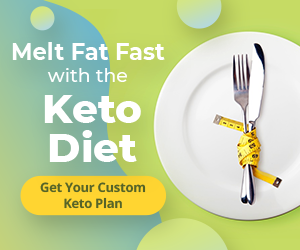Have you ever wondered what all the hype about the ketogenic diet plan is? Well, get ready because in this ultimate guide, you’re about to uncover everything you need to know about this popular diet trend. Whether you’re looking to shed a few pounds or simply improve your overall health, the ketogenic diet plan might just be the answer you’ve been searching for.
So, what exactly is a ketogenic diet plan? In simple terms, it is a high-fat, low-carb eating plan that encourages your body to enter a state of ketosis. What does that mean, you ask? Well, when your body is in ketosis, it begins to burn fat for fuel instead of relying on carbohydrates. This shift in energy source can lead to weight loss and a host of other health benefits. But don’t worry, we’ll dive into all the nitty-gritty details in the upcoming article, so you’ll be fully equipped with all the knowledge you need to embark on your own keto journey.
What is a ketogenic diet plan?
A ketogenic diet, commonly known as keto, is a low-carbohydrate, high-fat diet that has gained popularity as an effective weight loss strategy and a way to improve overall health. The main principle of a ketogenic diet plan is to drastically reduce the intake of carbohydrates and increase the consumption of healthy fats. By doing so, your body enters a state called ketosis, where it becomes highly efficient at burning fat for energy instead of relying on carbs.
Understanding the ketogenic diet
To understand the ketogenic diet, it’s important to know how your body typically uses energy. Normally, your body converts carbohydrates into glucose, which is the primary source of fuel for your cells. When you drastically reduce your carbohydrate intake, as in a ketogenic diet, the glucose supply diminishes, and your body looks for an alternative energy source. This leads to the production of ketones, molecules that are generated from the breakdown of fats in your liver.
Key principles of a ketogenic diet plan
There are several key principles to follow when adopting a ketogenic diet plan:
-
High fat intake: The majority of your daily calories should come from healthy fats. This includes foods like avocados, nuts and seeds, olive oil, coconut oil, and fatty fish.
-
Low carbohydrate intake: You should aim to severely restrict your carbohydrate intake to about 20-50 grams per day, depending on your individual needs and goals. This means avoiding sugary and starchy foods such as bread, pasta, rice, and most fruits.
-
Moderate protein intake: While protein is an essential nutrient, it should be consumed in moderation to avoid excessive production of glucose, which can hinder ketosis. Opt for lean sources of protein, such as chicken, turkey, fish, and tofu.
Benefits of following a ketogenic diet plan
Following a ketogenic diet plan has numerous benefits beyond weight loss:
-
Increased weight loss: Because your body is using fat as its primary fuel source, you may experience significant weight loss, particularly in the form of body fat.
-
Improved insulin sensitivity: By reducing carbohydrate intake, a ketogenic diet can help regulate blood sugar levels and improve insulin sensitivity, which is crucial for those with diabetes or insulin resistance.
-
Reduced inflammation: Inflammation is linked to many chronic diseases, including heart disease and certain types of cancer. The low-carb, high-fat nature of a ketogenic diet can help decrease inflammation in the body.
-
Enhanced brain function: Ketones provide a steady source of fuel for the brain, which can lead to improved mental clarity, focus, and cognitive function. Some studies even suggest that a ketogenic diet may help protect against age-related cognitive decline and neurodegenerative diseases like Alzheimer’s.
Getting started with a ketogenic diet plan
Now that you understand the basics of a ketogenic diet plan, let’s dive into how you can get started on your own keto journey.
Determining your macronutrient goals
Before you begin, it’s important to determine your macronutrient goals. These goals will dictate the amount of fat, carbohydrates, and protein you should aim for each day. The general guideline for a ketogenic diet is to consume 70-75% of your daily calories from fat, 20-25% from protein, and 5-10% from carbohydrates. However, these percentages can be adjusted based on your specific needs and goals.
Calculating your daily calorie intake
In addition to macronutrient goals, it’s also essential to calculate your daily calorie intake. This will help you maintain a calorie deficit if weight loss is your goal. There are numerous online calculators available that can help you determine the ideal calorie intake for your needs and to sustain your desired weight loss.
Choosing the right food sources
To successfully follow a ketogenic diet plan, it’s crucial to choose the right food sources. Here are some key foods to include in your diet:
- Healthy fats: Avocados, nuts and seeds, olive oil, coconut oil, and grass-fed butter.
- Protein sources: Chicken, turkey, beef, pork, fish, tofu, and eggs.
- Low-carb vegetables: Leafy greens, broccoli, cauliflower, zucchini, bell peppers, and asparagus.
- Berries: Strawberries, blackberries, and raspberries are low in carbohydrates and high in fiber.
Creating a meal plan
Meal planning is crucial when starting a ketogenic diet plan. It will help you stay on track and ensure that you’re consuming the right balance of nutrients. When creating a keto meal plan, focus on incorporating a variety of healthy fats, moderate protein, and low-carb vegetables. This will help you achieve and maintain ketosis while enjoying flavorful and satisfying meals.

Ketogenic diet plan and weight loss
One of the primary reasons why people turn to a ketogenic diet plan is to lose weight. Let’s explore how a ketogenic diet plan promotes weight loss and discover tips for optimizing your results.
How a ketogenic diet plan promotes weight loss
A ketogenic diet plan promotes weight loss through several mechanisms:
-
Increased fat burning: When your body is in ketosis, it becomes highly efficient at burning fat for energy. This can lead to significant weight loss, especially in stubborn areas like the abdomen and thighs.
-
Appetite suppression: Healthy fats and protein help keep you feeling full and satisfied, reducing the urge to overeat or snack between meals. This can result in a decreased calorie intake and ultimately lead to weight loss.
-
Regulated blood sugar levels: By reducing carbohydrate intake, a ketogenic diet plan helps stabilize blood sugar levels and prevents spikes and crashes. This can help control cravings and regulate hunger hormones, making it easier to adhere to your calorie goals.
Tips for optimizing weight loss on a ketogenic diet plan
While a ketogenic diet plan can be highly effective for weight loss, there are some tips to keep in mind to optimize your results:
-
Stay consistent: Consistency is key when following a ketogenic diet plan. Try to stick to your macronutrient and calorie goals every day to achieve and maintain ketosis.
-
Stay hydrated: Proper hydration is important for overall health and weight loss. Drinking enough water can also help reduce cravings and prevent unnecessary snacking.
-
Prioritize quality sleep: Good sleep is essential for weight loss and overall well-being. Aim for 7-8 hours of quality sleep per night to support your weight loss efforts.
Common mistakes to avoid
While a ketogenic diet plan can be beneficial, there are some common mistakes to avoid:
-
Ignoring nutrient balance: While the focus is on high-fat, low-carb foods, don’t neglect the importance of consuming a wide range of nutrients. Include plenty of non-starchy vegetables and moderate protein sources in your meals.
-
Overeating healthy fats: While healthy fats are a crucial component of a ketogenic diet plan, it’s still important to monitor portion sizes. Consuming excessive amounts of calories, even from healthy fats, can hinder weight loss.
-
Not adjusting your approach: It’s important to remember that a ketogenic diet plan may not be suitable for everyone. Monitor your progress and adjust your approach as needed to ensure long-term success and sustainability.
Achieving and maintaining ketosis
To reap the full benefits of a ketogenic diet plan, it’s important to achieve and maintain a state of ketosis. Here’s what you need to know:
Understanding ketosis and its importance
Ketosis is a metabolic state where your body begins producing and utilizing ketones for fuel instead of glucose. This occurs when carbohydrate intake is significantly reduced and the body starts to burn stored fat for energy. Achieving and maintaining ketosis is crucial for experiencing the weight loss and health benefits associated with a ketogenic diet plan.
Tracking ketone levels
Tracking your ketone levels can help ensure that you’re staying in ketosis. There are several methods available to measure ketones, including urine test strips, blood tests, and breath analyzers. Choose the method that best suits your preferences and budget to monitor your progress.
Strategies for entering and maintaining ketosis
Here are some strategies to help you enter and maintain ketosis:
-
Strict carbohydrate restriction: To enter ketosis, it’s essential to limit your carbohydrate intake to below 50 grams per day. Eliminate high-carb foods like bread, pasta, rice, and sugary snacks.
-
Increase healthy fat intake: Make sure you’re consuming enough healthy fats to replace the calories usually provided by carbohydrates. Prioritize sources like avocados, nuts and seeds, and olive oil.
-
Be mindful of protein intake: While protein is an essential nutrient, excessive consumption can hinder ketosis. Stick to moderate protein amounts and choose lean sources like chicken, fish, and tofu.

Managing potential side effects
As with any dietary change, there may be potential side effects when following a ketogenic diet plan. However, you can minimize these effects with careful planning and adjustments:
Common side effects of a ketogenic diet plan
Some common side effects of a ketogenic diet plan include:
-
Keto flu: When transitioning into ketosis, some people may experience flu-like symptoms, such as fatigue, headaches, dizziness, and irritability.
-
Digestive issues: The sudden increase in fat intake can cause digestive issues such as constipation, diarrhea, or bloating. These symptoms usually subside as your body adapts.
-
Electrolyte imbalance: When following a ketogenic diet plan, there’s a risk of electrolyte imbalances due to increased water loss. Be sure to consume adequate amounts of sodium, potassium, and magnesium.
Minimizing side effects
To minimize side effects when following a ketogenic diet plan, consider the following:
-
Gradual transition: Ease into the diet plan gradually. Start by reducing your carbohydrate intake slowly over a week or two to help your body adjust more smoothly.
-
Stay hydrated: Proper hydration is crucial to avoid dehydration and electrolyte imbalances. Drink plenty of water and consider adding electrolyte-rich foods or supplements to your diet.
-
Maintain nutrient balance: Ensure you’re getting a variety of nutrient-rich foods to support your overall health. Include non-starchy vegetables, lean proteins, and healthy fats in your diet.
Seeking professional guidance if needed
If you’re experiencing severe side effects or have pre-existing health conditions, it’s recommended to seek guidance from a healthcare professional or registered dietitian before starting a ketogenic diet plan. They can provide personalized advice and help monitor your progress to ensure your safety and well-being.
Incorporating exercise into your ketogenic diet plan
Exercise is an essential component of a healthy lifestyle, and it can complement your ketogenic diet plan by increasing weight loss and improving overall fitness.
The role of physical activity in a ketogenic diet plan
Physical activity is beneficial for several reasons when following a ketogenic diet plan:
-
Weight loss support: Exercise can increase calorie expenditure and enhance the fat-burning effects of a ketogenic diet plan, leading to more efficient weight loss.
-
Improved insulin sensitivity: Regular physical activity can help improve insulin sensitivity, which is essential for managing blood sugar levels and reducing the risk of diabetes.
-
Enhanced overall health: Exercise has numerous health benefits, including improved cardiovascular health, increased muscle mass, and reduced risk of chronic diseases like heart disease and certain cancers.
Choosing the right types of exercise
When choosing exercises to incorporate into your ketogenic diet plan, consider the following:
-
Aerobic exercise: Activities like walking, running, cycling, and swimming are great options for burning calories and increasing your overall fitness.
-
Strength training: Incorporating resistance or strength training into your routine helps build muscle mass and boosts your metabolism for increased fat burning.
-
High-intensity interval training (HIIT): HIIT workouts involve short bursts of intense exercise followed by periods of rest. This type of training can be highly effective for fat burning and improving cardiovascular fitness.
Optimal timing for workouts
The optimal timing for workouts on a ketogenic diet plan will vary depending on your personal preferences and schedule. Some people prefer to exercise in a fasted state, while others may feel more energized with a small pre-workout meal. Experiment with different timings to find what works best for you and your body.

Adapting a ketogenic diet plan to your lifestyle
For long-term success and sustainability, it’s important to adapt your ketogenic diet plan to fit your lifestyle and individual needs.
Making the diet plan sustainable
Sustainability is crucial when adopting any diet plan. Here are some tips to make your ketogenic diet plan sustainable:
-
Variety and flexibility: Don’t be afraid to experiment with different foods and recipes to keep your meals interesting and enjoyable.
-
Balance and moderation: While a ketogenic diet plan focuses on particular macronutrient ratios, it’s still important to maintain an overall balanced and varied diet.
-
Mindful and intuitive eating: Listen to your body’s hunger and fullness cues. Eat when you’re hungry and stop when you’re satisfied, rather than strictly adhering to eating schedules or external cues.
Eating out and traveling on a ketogenic diet plan
Eating out and traveling can present challenges when following a ketogenic diet plan, but it’s still possible to stay on track:
-
Research and plan ahead: Look up keto-friendly options at restaurants or search for grocery stores that offer keto-friendly products at your travel destination.
-
Make smart choices: Choose meals that are higher in healthy fats and protein while minimizing carbohydrate intake. Opt for grilled or roasted meats, salads with oil-based dressings, and non-starchy vegetable sides.
-
Pack snacks: When traveling, bring along keto-friendly snacks like nuts, beef jerky, or pre-cut vegetables to have on hand in case you can’t find suitable options.
Dealing with social situations and temptations
Social situations and temptations can make it challenging to stick to your ketogenic diet plan. Here are some strategies to navigate these situations:
-
Communication: Let your friends and family know about your dietary restrictions and goals so that they can be supportive and understanding.
-
Bring your own dishes: When attending potlucks or gatherings, offer to bring a keto-friendly dish that you can enjoy without straying from your diet plan.
-
Focus on long-term goals: Remind yourself of the reasons you started your ketogenic diet plan in the first place and the positive impact it’s having on your health and well-being.
Understanding the potential health benefits
While weight loss is a common goal when following a ketogenic diet plan, there are numerous other potential health benefits:
Improving insulin sensitivity
A ketogenic diet plan can help improve insulin sensitivity, a crucial factor in managing blood sugar levels. By reducing carbohydrate intake, the body requires less insulin to process glucose, leading to improved blood sugar control and reduced insulin resistance.
Reducing inflammation
Chronic inflammation is linked to numerous health conditions, including heart disease, diabetes, and certain cancers. The high intake of healthy fats and reduction in processed carbohydrates on a ketogenic diet plan can help reduce inflammation in the body, promoting overall health and reducing the risk of chronic diseases.
Enhancing brain function
The brain relies on glucose as its primary fuel source. However, it can also efficiently utilize ketones generated during ketosis. Some studies suggest that a ketogenic diet plan may enhance brain function, improve memory, focus, and cognitive performance. It may also have neuroprotective effects, potentially reducing the risk of age-related cognitive decline and certain neurological disorders.
Managing certain medical conditions
A ketogenic diet plan has been studied for its potential therapeutic effects on a range of medical conditions, including epilepsy, Alzheimer’s disease, Parkinson’s disease, and polycystic ovary syndrome (PCOS). While more research is needed, initial studies show promising results in managing these conditions.
Long-term considerations and maintenance
Transitioning to a balanced maintenance phase and monitoring your progress is crucial for long-term success with a ketogenic diet plan.
Transitioning to a balanced maintenance phase
Once you’ve achieved your weight loss goals or reached a point where you’re satisfied with your progress, transitioning to a balanced maintenance phase is essential. This phase involves gradually increasing your carbohydrate intake while remaining mindful of portion sizes and continuing to prioritize nutrient-dense foods.
Monitoring your progress
Regularly monitoring your progress is crucial for ensuring that you’re on track and staying within your desired health and weight goals. Keep track of your weight, body measurements, and how you’re feeling both physically and mentally to assess your progress and make adjustments if necessary.
Adjusting your diet plan as needed
As your body changes and adapts, it’s important to adjust your diet plan to accommodate its evolving needs. This may involve tweaking your macronutrient ratios, increasing or decreasing calorie intake, or adding new foods to your diet. Stay in tune with your body and make adjustments as needed to maintain progress and avoid plateaus.
Conclusion
In conclusion, a ketogenic diet plan can be a powerful tool for weight loss and improving overall health. By understanding the key principles of a ketogenic diet, determining your macronutrient and calorie goals, choosing the right food sources, and making a meal plan, you can successfully embark on your keto journey.
Remember to be mindful of potential side effects and seek professional guidance if needed. Incorporate exercise into your routine, adapt the diet plan to fit your lifestyle, and be aware of the potential health benefits beyond weight loss.
Whether you’re just starting or already on your ketogenic diet plan, remember that each step you take brings you closer to achieving your goals. Stay committed, stay resilient, and enjoy the benefits this ultimate guide to the ketogenic diet plan has to offer.




